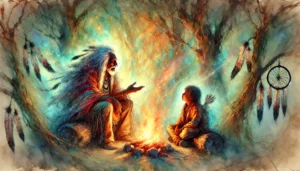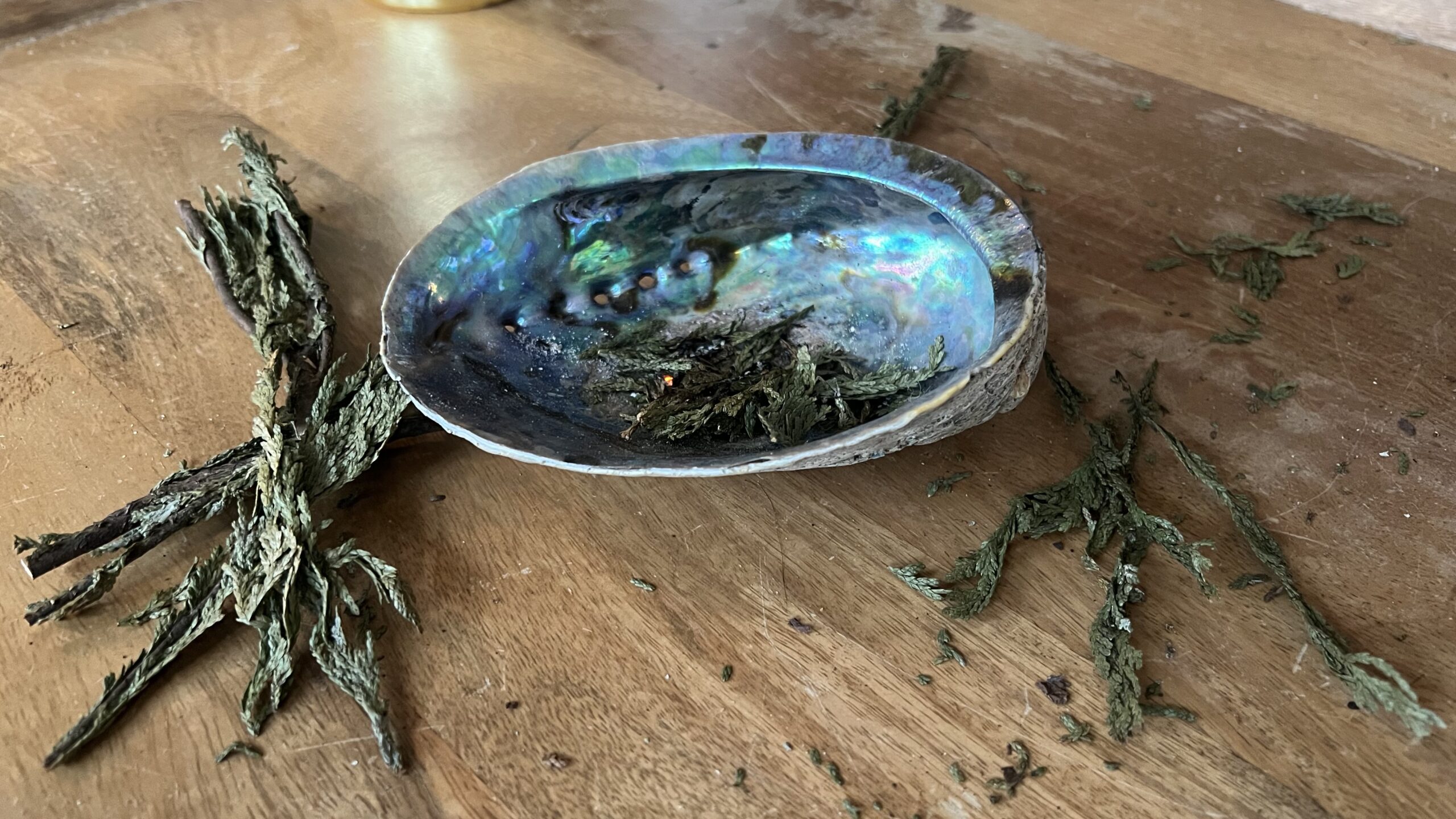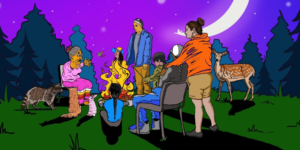
The Four Sacred Medicines
The Voices of Our Ancestors The Four Sacred MedicinesThe origins of Native American healing practice and ceremony are as diverse and rich as each of the hundreds of American tribes

Cedar, often called the “Tree of Life” or “Grandmother Medicine”, is more than just a plant for us indigenous people. Cedar is sacred and plays a central role in our traditions, beliefs, and daily lives for generations. Cedar is a reminder of our connection to the earth, our ancestors, and the spiritual realms. Every part of the cedar tree offers purpose, from the wood of the truck providing firewood, to branches for sweeping a hogan to the cedar tips for ceremony. The cedar is held in high regard for its high versatility and usage for our ancestors.
Cedar is not just a tree; it is a provider, a guide, and a valuable resource. For countless generations, we have worked with cedar not only for practical needs but also in alignment with our teachings.
Bark: Cedar bark is harvested with great care and intention. Its pliable fibers can be twined into baskets, nets, mats, and even clothing. These items are crafted with respect, as they carry the energy and life force of the cedar tree itself.
Wood: We choose cedar wood for its strength, durability, and cultural significance. Longhouses, canoes, home building, hogan building, and totem poles crafted from cedar embody our stories, traditions, and connection to mother earth.
Medicine: Cedar is a powerful healer. Its bark and leaves are used for treating wounds, relieving pain, and clearing respiratory issues. To this day, cedar remains an essential part of our traditional medicine practices, providing both physical and spiritual healing.
Whenever we use cedar, it is done with reverence. We never take more than what we need, always acknowledging the life tree gives and expressing our gratitude in return.
Cedar holds profound spiritual significance. It is more than a tree in our eyes—it is a protector, a healer, and a bridge between this world and the spirit world.
Often, cedar is believed to carry the energy of our ancestors. It acts as a connection, strengthening our bond with those who came before us. During ceremonies, cedar is used to bring clarity, purification, and healing, serving as a tool to align our spirits with guidance from the ancestors.
Cedar also symbolizes protection. Branches are often placed around our homes and sacred spaces to dispel negative energy. The oils derived from cedar are used for cleansing and grounding, while its aroma is said to promote balance and inner peace.
Smudging with cedar is one of our most well-known practices. By burning its leaves and guiding the smoke over individuals, spaces, or objects, this sacred ritual purifies and removes negative energies.
However, smudging is more than just a cleansing process. It is a moment of connection that aligns with Mother Earth, our intentions, and the spiritual realms. The smoke from the cedar carries our prayers and gratitude to the Greater Spirits, surrounding us with its protective and healing energy. Every waiver of smoke is a reminder of our relationship with nature and its sacred gifts.
Different tribes honor cedar in unique ways, yet its sacred essence remains a common thread across all.
Pacific Northwest Tribes: For coastal tribes like the Salish and Tlingit, the Western Red Cedar represents generosity and community. The tree provides materials for essential items such as canoes, paddles, and masks, often used during ceremonies.
Anishinaabe: Cedar is considered a “Grandmother Medicine,” representing nurturing and protective qualities. It is closely tied to the south direction of the Medicine Wheel, signifying warmth, strength, and grounding. Cedar is used in ceremonies like smudging, sweat lodges, and the preparation of cedar tea for healing purposes.
Ojibwe: Cedar is one of the “Four Sacred Medicines,” alongside sage, sweetgrass, and tobacco. Its primary role is in purification rituals, its cleansing smoke carrying prayers and warding off negativity.
Cherokee: Among the Cherokee people, cedar is believed to house the spirits of their ancestors. Its wood holds deep spiritual meaning and is often used in protective rituals, not as mere material but as a vessel for wisdom and guidance.
Each tribe’s relationship with cedar reflects its unique traditions and environment, but for all of us, cedar represents resilience, sacredness, and connecting us to mother earth. Mother earth provided all that we require to move forward.
Drinking cedar tea is one way we honor its healing properties. Whether you’re fighting a cold, seeking purification, or participating in ceremonies, cedar tea offers a deep connection to the spirit of the tree.
Important Notes: Drink cedar tea in moderation and consult with a healthcare professional before trying it, especially if you have allergies or are pregnant. Always collect cedar responsibly, taking only what you need.
The traditions surrounding cedar remain as vital today as they were with our ancestors. From crafting essential tools to cleansing our spirits, cedar continues to guide us. Its teachings remind us to walk with balance, gratitude, and connection in all that we do.
To use cedar is a privilege, and it comes with great responsibility. We must honor its sacred essence by harvesting it thoughtfully and treating every part of the tree with respect. Working with cedar is a way to stay rooted in our culture, to remember the strength of our ancestors, and to live in harmony with the earth.
May the sacred cedar continue to teach us resilience, generosity, and spirituality for generations to come. With gratitude, may we always honor its gifts.

The Voices of Our Ancestors The Four Sacred MedicinesThe origins of Native American healing practice and ceremony are as diverse and rich as each of the hundreds of American tribes

The Voices of Our Ancestors The Seven Sacred Branches are the principles of character that each Anishinaabe should live by. Love, Respect, Courage, Honesty, Wisdom, Humility, Truth. According to the

The Voices of Our Ancestors Storytelling is the foundation of our identity, wisdom, history and resilience. Stories passed down from generation to generation when celebrations were held in the olden